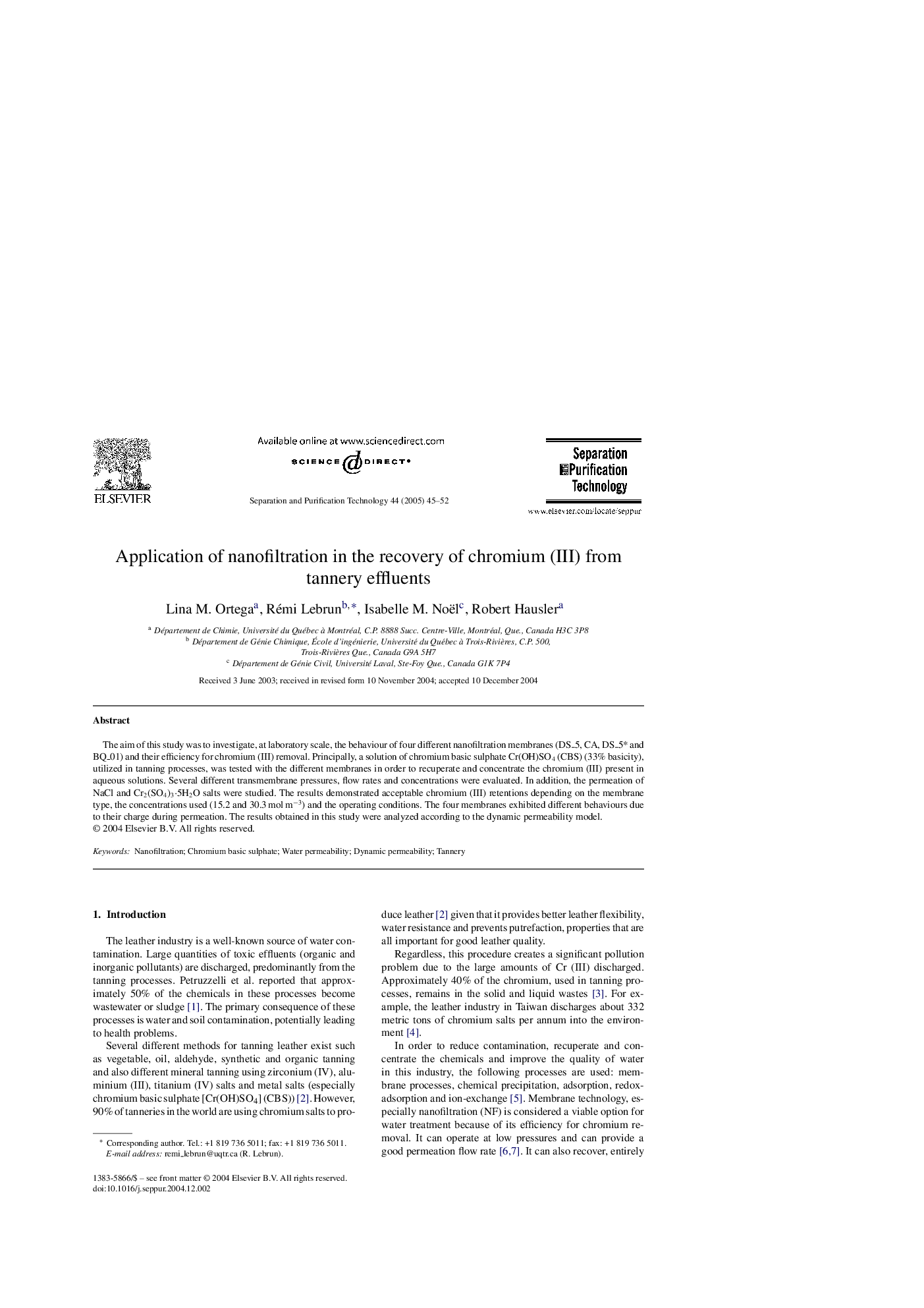| Article ID | Journal | Published Year | Pages | File Type |
|---|---|---|---|---|
| 10389884 | Separation and Purification Technology | 2005 | 8 Pages |
Abstract
The aim of this study was to investigate, at laboratory scale, the behaviour of four different nanofiltration membranes (DS_5, CA, DS_5* and BQ_01) and their efficiency for chromium (III) removal. Principally, a solution of chromium basic sulphate Cr(OH)SO4 (CBS) (33% basicity), utilized in tanning processes, was tested with the different membranes in order to recuperate and concentrate the chromium (III) present in aqueous solutions. Several different transmembrane pressures, flow rates and concentrations were evaluated. In addition, the permeation of NaCl and Cr2(SO4)3·5H2O salts were studied. The results demonstrated acceptable chromium (III) retentions depending on the membrane type, the concentrations used (15.2 and 30.3 mol mâ3) and the operating conditions. The four membranes exhibited different behaviours due to their charge during permeation. The results obtained in this study were analyzed according to the dynamic permeability model.
Related Topics
Physical Sciences and Engineering
Chemical Engineering
Filtration and Separation
Authors
Lina M. Ortega, Rémi Lebrun, Isabelle M. Noël, Robert Hausler,
